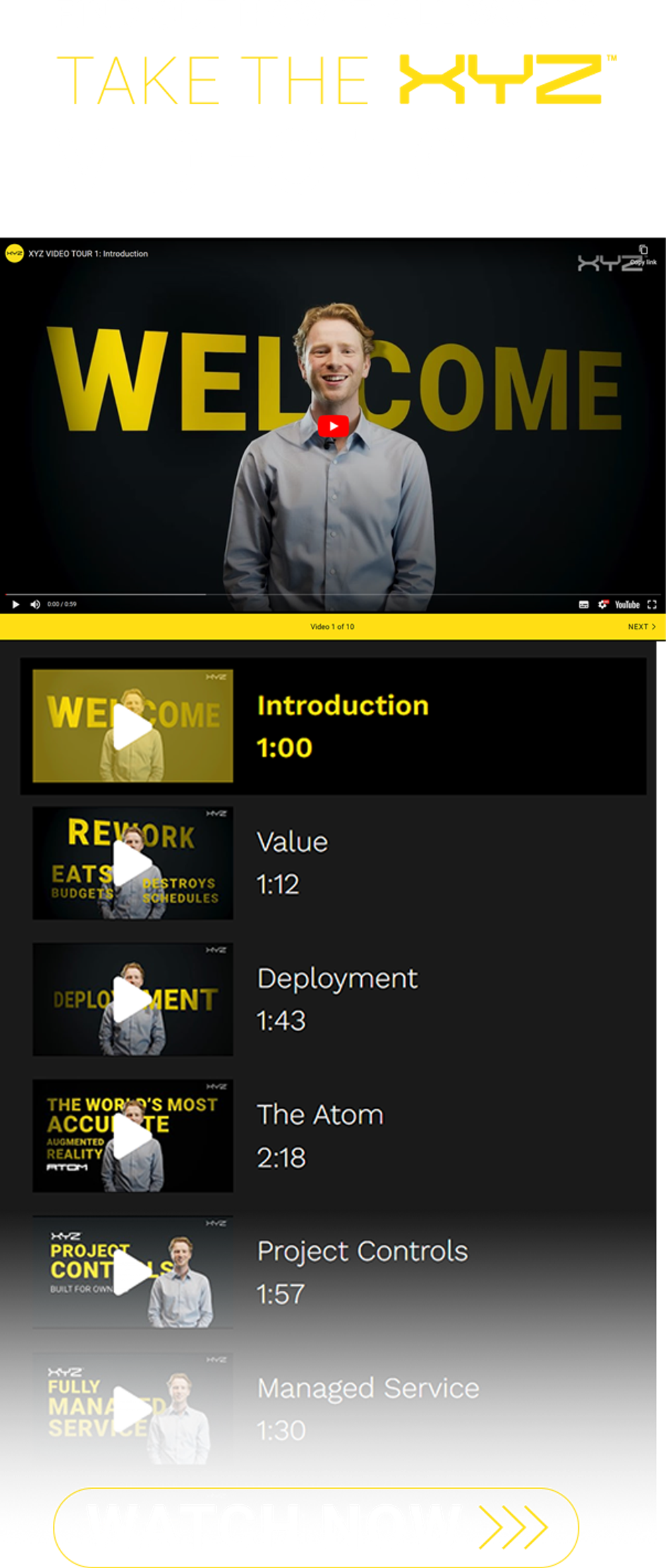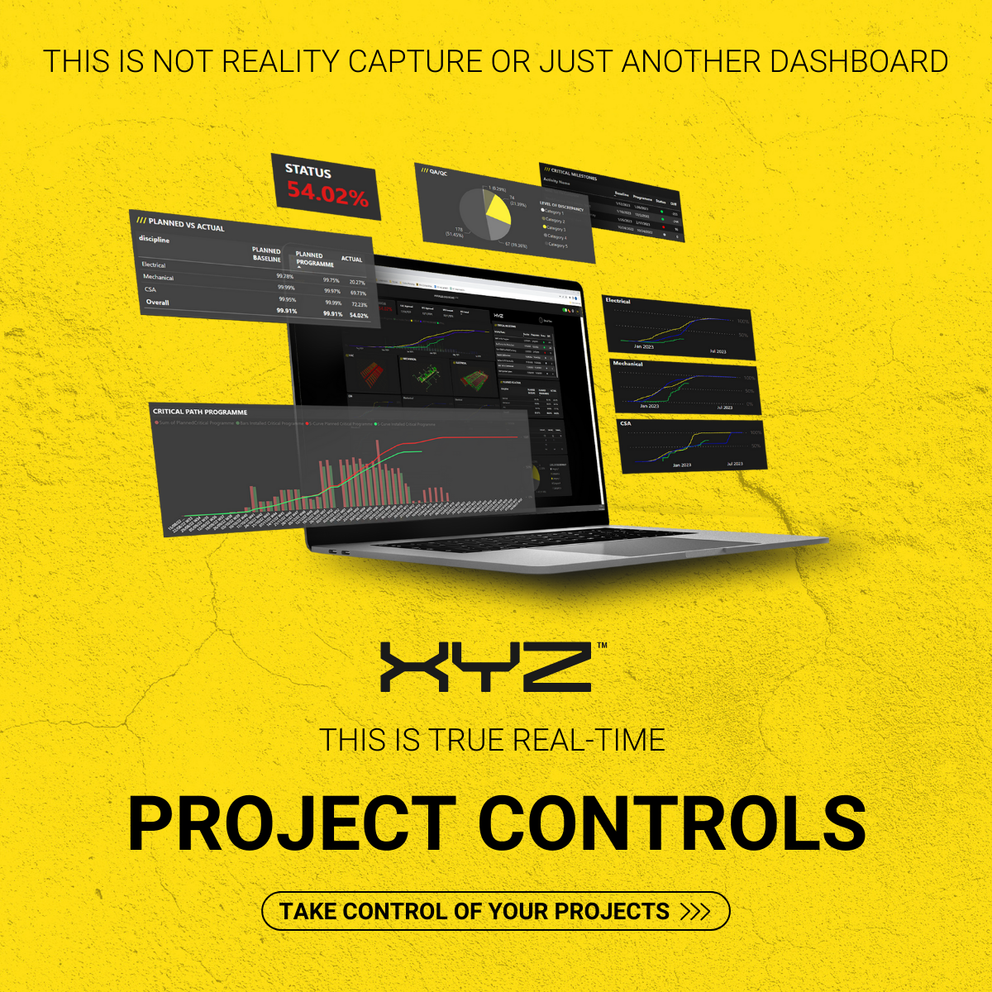-
Services
Services
Find out how we work with our clients and deliver value to construction projects from day one
-
Solutions
Solutions
Discover how all our solutions sync together to deliver construction's most powerful BIM platform to date
-
Built for
Built for
-
Industry
Industry
Understand how we support construction's biggest sectors, and hear from our clients who have experienced the power of XYZ
-
Resources
Resources
Get stuck into all our latest thought leadership, news, reports and industry leading content
-
Company
Company
Dive into what makes XYZ tick, unearth why construction is in our DNA and why we are world leaders in AR solutions

Insights
It’s time construction started prioritising value

28 July 2022
Stephen Webb, Senior Project Delivery Manager at XYZ Reality, writes about the challenges the construction sector faces and the value that can be delivered through a sensible approach to digital adoption.
If there’s one thing that I have heard said too many times during my career, it’s this: “What about the cost?”
Right at the start of my professional life, I knew that no industry could ever afford to stay still for too long. I knew that I wanted to be in a sector that embraced change.
Why construction needs to embrace change
Don’t get me wrong, I’m not saying that construction firms should change for change’s sake. Thankfully, 99% of people in our industry aren’t going to adopt a new piece of tech just because they think it’s sexy. But the truth is, our sector is in a precarious position and change is necessary.
Margins are slim and most projects currently yield about 3% profit – on a good day. On top of that, the cashflow nature of our business means that most firms, big or small, only need two or three consecutive projects to go south before they find themselves in real, serious trouble. And then there’s the fact that so many construction companies operate in a tight niche which means they’re exposed to market fluctuations and have nothing to fall back on if the sector they serve hits a slump. Material prices are sky-high, labor shortages are critical and there’s this threat of outliers waiting in the wings for an opportunity to diversify and gobble up market share from incumbents.
In short, there is no room for complacency. Construction companies need to find ways to operate more efficiently and do more with less, or their days are numbered.
No technology is going to be a silver bullet for the challenges that construction firms face. But what I do believe is that the right kinds of tech, applied in the right way, with the proper groundwork and investment behind them are going to help provide the productivity gains that are needed.
Productivity and other, less obvious types of value
What construction firms must start asking themselves is not, “what will this tech cost us?” but rather, “what value can it bring?”
That might sound obvious, but I hear the same thing time and time again.
“What about the cost?”
The thing that makes XYZ Reality different from other companies I’ve worked for is that we can start delivering a return on your investment so quickly. You spend £1, you get £10 back. In fact, I think, on some hyperscale projects, the Atom™ could yield even better ROI than that.
A large portion of that value is simply down to early validation. In the old days, a contractor might turn up on site, look at the plans and say, “That’s an advisory note. We’ll install this thing there or thereabouts.”
And if that installation were to end up out of tolerance – as it most probably would – the error would only then be picked up by laser scanning, or when it clashes with future installations. You’d have to wait for that scan to take place, wait for the results to be reviewed against the plans, and then wait some more for the rework to take place. After all that, how many days have been lost?
With Engineering Grade Augmented Reality, you can see exactly where installation needs to be and build it right, first time.
There are lots of other ways that value can be delivered, too. Imagine if you had a track record of consistently delivering projects on time and within budget. Imagine the good that could do for your firm’s reputation. Imagine how much new business you could win. What would the value of that be?
Plus, you’ve got CAPEX vs OPEX to consider. Forgetting for a moment how much money can be saved in the construction phase, think about what can be saved in the operational phase if the asset is built according to plan, and the as-built model is completely accurate. In this scenario, maintenance is more effective, the asset operates more efficiently and the building lasts longer.
Finally, sometimes when we think about value over cost, we’ve got to think about the type of value that isn’t preceded by pound signs. For instance, if you’re building a hospital and there’s a delay on completion, what’s the human and societal cost relating to those people who are supposed to be receiving medical treatment? Alternatively, if 10, 20 or 30% of a project is rework, what’s the unnecessary environmental cost of that?
Who’s to blame for construction’s productivity problem?
It’s too easy to lay the blame for a lack of productivity at the feet of the construction firms. It’s too easy to say that senior management are stuck in the past, or that contractors have failed to modernize. At XYZ, we don’t see it that way. We believe that it’s the technology firms that have failed. Lots of the tech has either been ineffective, too complex or – as with scanning – has approached a problem from a fundamentally flawed perspective, making processes reactive, rather than proactive.
But that’s all changed. The launch of the Atom makes Engineering Grade AR™ a viable application in construction for the first time. With it, proactive validation becomes possible and ultimately, companies can start to achieve the productivity levels they need to thrive.
Want to learn more about the Atom? Book a demo today.








